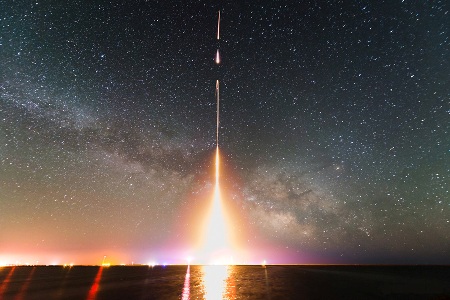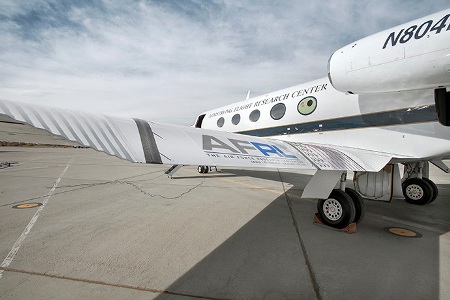
A time-lapse photograph of the CIBER rocket launch, taken from NASA's Wallops Flight Facility in Virginia in 2013. Photo: T. Arai/University of Tokyo
WASHINGTON (PTI): NASA scientists have found that the universe is brighter than thought, with a surprising surplus of infrared light in the dark space between galaxies.
The US space agency's sounding rocket experiment detected a surplus of infrared light in the dark space between galaxies, a diffuse cosmic glow as bright as all known galaxies combined.
The glow is thought to be from orphaned stars flung out of galaxies, NASA said.
The findings redefine what scientists think of as galaxies. Galaxies may not have a set boundary of stars, but instead stretch out to great distances, forming a vast, interconnected sea of stars.
Observations from the Cosmic Infrared Background Experiment or CIBER are helping settle debate on whether this background infrared light in the universe comes from these streams of stripped stars too distant to be seen individually, or from the first galaxies to form in the universe.
"We think stars are being scattered out into space during galaxy collisions," said Michael Zemcov, lead author of the research paper and astronomer at the California Institute of Technology (Caltech) and NASA's Jet Propulsion Laboratory (JPL) in Pasadena, California.
"While we have previously observed cases where stars are flung from galaxies in a tidal stream, our new measurement implies this process is widespread," said Zemcov.
Using suborbital sounding rockets, which are smaller than those that carry satellites to space and are ideal for short experiments, CIBER captured wide-field pictures of the cosmic infrared background at two infrared wavelengths shorter than those previously detected by NASA's Spitzer Space Telescope.
Because our atmosphere itself glows brightly at these particular wavelengths of light, the measurements can only be done from space, researchers said.
During the CIBER flights, the cameras launch into space, then snap pictures for about seven minutes before transmitting the data back to Earth.
Scientists masked out bright stars and galaxies from the pictures and carefully ruled out any light coming from more local sources, such as our own Milky Way galaxy.
What was left is a map showing fluctuations in the remaining infrared background light, with splotches that are much bigger than individual galaxies.
The brightness of these fluctuations allows scientists to measure the total amount of background light.
The maps showed a dramatic excess of light beyond what comes from the galaxies. This infrared background light has a blue spectrum, which means it increases in brightness at shorter wavelengths.
This is evidence the light comes from a previously undetected population of stars between galaxies. Light from the first galaxies would give a spectrum of colours that is redder than what was seen.
The findings appear in the journal Science.
 Previous Article
Previous Article Next Article
Next Article












The Indian Air Force, in its flight trials evaluation report submitted before the Defence Ministry l..
view articleAn insight into the Medium Multi-Role Combat Aircraft competition...
view articleSky enthusiasts can now spot the International Space Station (ISS) commanded by Indian-American astr..
view article